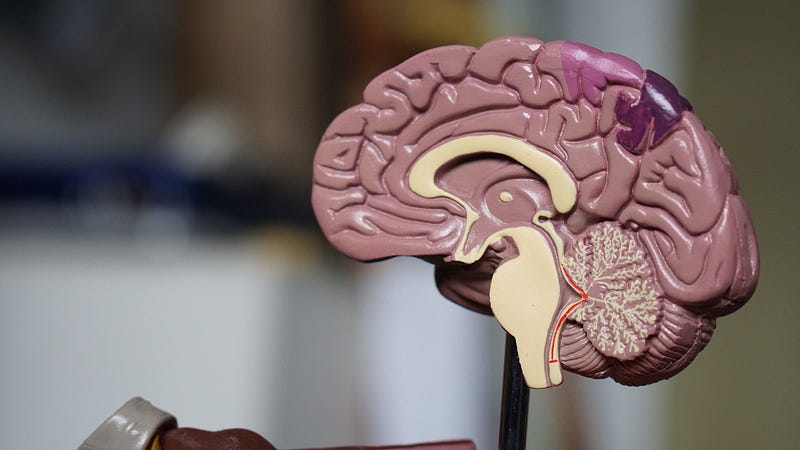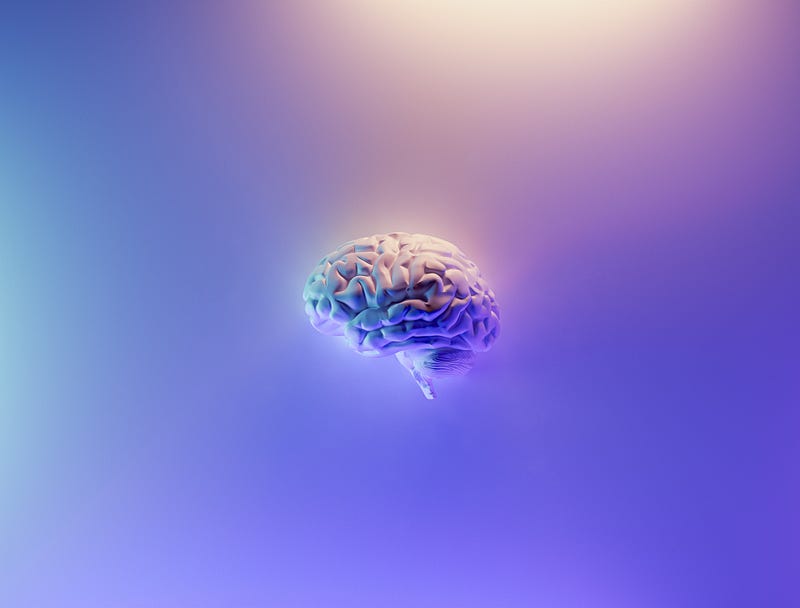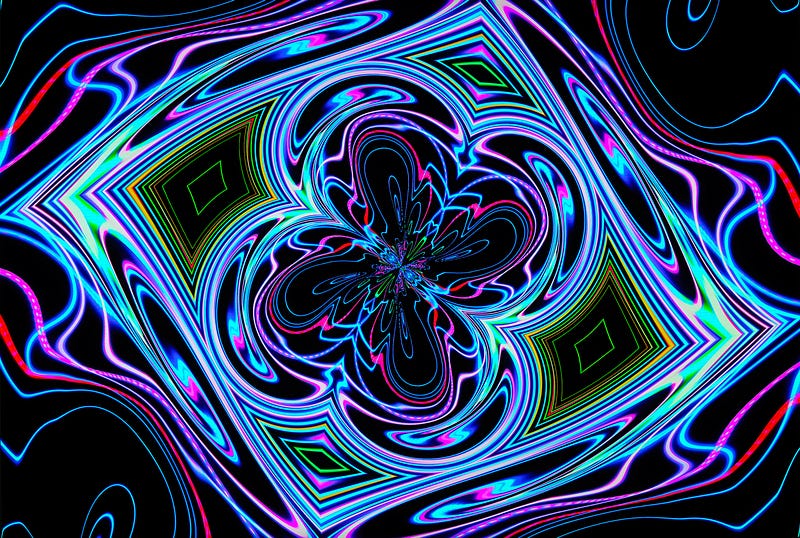Reviving Imagination: The Science of the Pineal Gland and DMT
Written on

Do you recall the days of childhood when your imagination was boundless? You perceived the world as a realm of wonder and intrigue. Playtime offered endless roles; perhaps you were a cat traversing the kitchen or a mermaid swimming in a pool. You assigned rich personalities and backstories to your dolls, action figures, or stuffed animals. In your mind, you transformed into someone extraordinary—a superstar, a superhero, or the ruler of a kingdom.
Now, you find yourself staring at a screen, yearning for a spark of that childhood thrill, whether from a TV show or a TikTok clip. Yet, you hesitate to embrace that imaginative spirit once more, thinking of it as foolishness or immaturity.
In this article, I will delve into the neuroscience of imagination, its connection to the pineal gland, the chemical DMT, and the significance of synaptic strength. I'll explore how imagination's decline correlates with diminishing brain plasticity—a natural aspect of aging exacerbated by environmental stressors. Additionally, I'll discuss how leaders around the globe seem intent on stifling imaginative power and offer strategies for rediscovering your creative spirit.

The Pineal Gland
The pineal gland is a small yet enigmatic part of the brain. While its functions are not fully understood, it is recognized for its role in regulating circadian rhythms and hormone levels, crucially impacting how we interpret reality.
This gland synthesizes melatonin, a hormone vital for sleep. Insufficient melatonin can lead to sleep disturbances and is associated with various health issues, including cardiovascular diseases, cancer, menstrual irregularities, and neurological disorders like migraines, schizophrenia, and dementia.
Philosopher René Descartes famously referred to the pineal gland as “the seat of the soul.” It has been revered throughout history, even in ancient Egypt as the “eye of Horus.” Although not conclusively proven, there is a strong likelihood that the pineal gland also produces DMT.
DMT
DMT (N, N-dimethyltryptamine) is often labeled as a psychedelic substance and is classified as a Schedule I drug in the U.S. It can be synthesized or extracted from plants rich in this compound. Its consumption is reported to induce profound alterations in perception and vivid hallucinations akin to dreaming.
Remarkably, DMT is believed to occur naturally in humans. Many researchers theorize that it is released during sleep, contributing to dreams, and in heightened amounts during critical life events like birth and death. Recent studies, including one from 2019, have demonstrated that DMT is present in trace amounts in rats and is released during cardiac arrest, suggesting that all mammals, including humans, naturally produce DMT.

Aging and Imagination: Brain Changes
Infants and young children possess significantly different brain structures compared to adults. The brains of babies are characterized by high plasticity, described as “permeable” or “fluid,” whereas adult brains become more “solid” and “concrete.”
Unlike adults, a baby’s brain features a greater number of synapses and enhanced connectivity across various regions. As we age, some synapses strengthen while others deteriorate, leading to a brain divided into distinct areas with limited interaction. This structural change grants adults greater focus but also results in rigidity and resistance to change.
Recent research has shown that brain activity during dreams or under the influence of psychedelics bears similarities to that of an infant's brain. Moreover, aging involves a decline in synapses and neural connections, alongside the calcification of the pineal gland. This gland, lacking a blood-brain barrier, is susceptible to various environmental toxins, making it particularly vulnerable.
It is likely that ongoing research will eventually reveal that children have higher levels of naturally occurring DMT and more robust pineal gland functions than adults, offering scientific insights into our diminishing imaginative capacity with age.
The question, “Why do we lose our imagination as we grow older?” is frequently posed. While some attribute this decline to accumulated life experiences, increased responsibilities, reliance on technology, and a shift toward logical thinking, I contend that the root cause is simpler: biological degradation.
Imagination as a Societal Threat
The gradual loss of imagination is a significant concern. It underpins our fast-paced, productivity-driven, consumer-oriented culture. While imagination fosters a state of “being,” its absence relegates us to mere “doing.” As we age, we become fixated on achievements, with motivations ranging from territorial conquests to environmental degradation. Ultimately, it is not an exaggeration to assert that imagination has the potential to save lives.
An ongoing battle against imagination is evident, likely because its suppression supports a capitalist framework that benefits a select few. Evidence of this suppression is reflected in the historical attempts to stifle psychedelic research, which holds the key to reversing the biological decline associated with imagination.

Psychedelic Research
Among various substances, psychedelics pose a significant challenge to advanced societies. Consider that opioids are responsible for 70% of drug overdoses yet are classified as Schedule II drugs and are commonly prescribed. In contrast, psychedelics are categorized as Schedule I drugs, deemed to have no medical benefit.
Psychedelic research flourished in the early 20th century but was abruptly curtailed in 1970. While there are valid arguments for the prohibition of psychedelics for recreational use, halting scientific investigation into these substances in controlled settings by qualified professionals lacks a logical basis.
The year 2000 marked a resurgence in psychedelic research, leading to groundbreaking findings. Studies have shown psilocybin can assist in smoking cessation, psychedelics can treat alcoholism, and they may reduce the brain's ego center while alleviating clinical depression.
Notably, a 2021 study titled “Serotonergic Psychedelics in Neural Plasticity” confirms that psychedelics can stimulate neural plasticity by reconnecting lost synaptic pathways. This restoration of childhood-like imaginative capabilities is not merely temporary but can lead to lasting changes in the brain.
Remember, DMT is a psychedelic that naturally occurs in our bodies.

It's Not Too Late: Reclaiming Imagination
One can only hope that with continued research, psychedelic medicine will eventually be accessible to all adults. Recently, we have witnessed the integration of psilocybin and MDMA in therapeutic environments. However, we should not depend solely on psychedelics for rejuvenation.
Numerous strategies can help decalcify the pineal gland and promote neural plasticity, such as taking supplements like melatonin and Omega-3s, minimizing screen time, avoiding fluoride, choosing organic foods, exercising, and exposing oneself to indirect sunlight.
The most effective approach to rekindling your imagination is to actively engage it. Grant yourself permission to dream, to explore different identities, and to look beyond the surface.
Imagination is akin to a muscle—the more you utilize it, the stronger it becomes. When you engage your imagination (for instance, by picturing a dragon before you), you can sense a part of your brain activating. Society often equates imagination with foolishness, yet it demands significant mental strength.
We are conditioned to fear imagination because it poses a threat to consumerist agendas, political leaders, and the wealthiest individuals. However, embracing imagination when wielded with control is nothing to fear.
Consider hallucinatory disorders like schizophrenia, associated with low melatonin levels. One could argue that the suppression of imagination contributes to these overwhelming hallucinations. The more one stifles their imagination, the more it can spiral out of control. Conversely, by consciously embracing imagination, you take charge.
Conclusion
In summary, imagination likely stems from the mysterious chemical DMT produced by the pineal gland. As we age, the gland's functionality diminishes, resulting in reduced DMT production, weakened synapses, and disrupted neural connections. This decline transforms our mental state from “being” to “doing,” reinforcing a consumerist society that benefits the elite. Although there have been attempts to suppress psychedelic research, evidence is emerging that these substances can heal the brain and rekindle imagination. Regardless of the status of psychedelics, you possess the power to revive your imagination through your mindset!
Sources
- https://pubmed.ncbi.nlm.nih.gov/29095071/
- https://www.healthline.com/health/pineal-gland-function#mood-disorders
- https://labblog.uofmhealth.org/lab-report/mystical-psychedelic-compound-found-normal-brains
- https://www.healthline.com/health/what-is-dmt
- https://www.nature.com/articles/s41598-019-45812-w
- https://www.wsj.com/articles/for-babies-life-may-be-a-trip-1531932587
- https://www.cdc.gov/drugoverdose/epidemic/index.html
- https://www.hopkinsmedicine.org/psychiatry/research/psychedelics-research.html
- https://www.frontiersin.org/articles/10.3389/fnmol.2021.748359/full
- https://www.webmd.com/sleep-disorders/what-to-know-about-calcification-of-the-pineal-gland